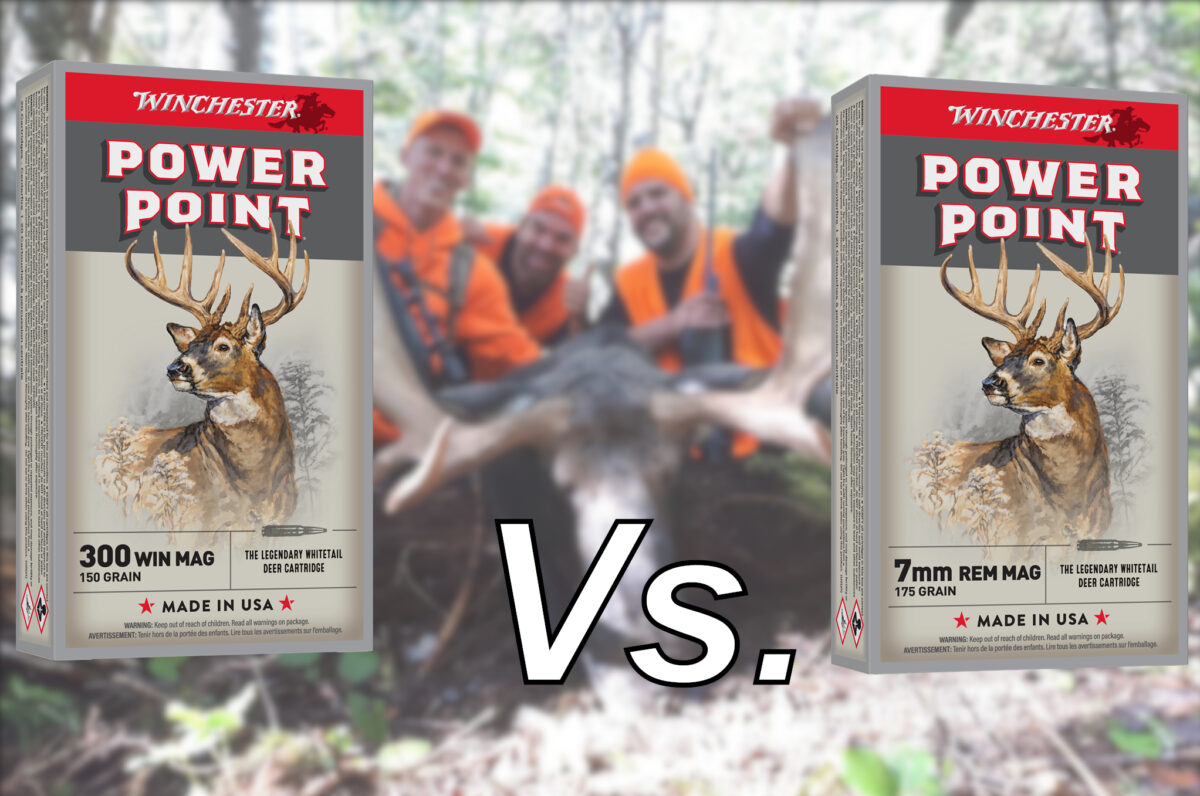7mm Mag vs 300 Win Mag: Which Is Better For Hunting?
Zac K. 10.25.24

If you’re looking to step up from the classic deer cartridges like .30-06 or .270, and into the world of magnum cartridges, you’ll be confronted with an immediate choice: Do you want to go with 7mm Remington Magnum or .300 Winchester Magnum? Or as they’re commonly known, 7mm Mag or .300 Win Mag—which is better for hunting?
While hunt camps and (more recently) Internet forums have argued this question for years, I believe there is a right answer beyond the “Either is fine” compromise.
Cartridge History
Both of these cartridges came to market in the early 1960s. When Remington introduced their new Model 700 bolt-action in 1962, they also brought out their new 7mm Remington Magnum cartridge. It was a belted magnum cartridge, reworked from the .264 Winchester Magnum, which was itself a Honey-I-Shrunk-The-Projectile version of the .375 H&H Magnum. There were differences in case length and other details. Essentially, though, Remington’s new seven-mil cartridge was a new-age adaptation of a 50-year-old cartridge design. Instead of pushing a big-diameter bullet at fast speeds for dangerous game like the original, it was meant to push a smaller-diameter bullet even faster for less-dangerous animals.
The .300 Winchester Magnum likewise descended from the .375 H&H case; it came to market in 1963. Because it is designed for larger-diameter .308-caliber projectiles, it can handle heavier bullets than its Remington-designed competition, which was built for .284-caliber projectiles.
When the .300 Winchester Magnum came to market, it faced competition from Remington’s 7mm round and also from several other .30-cal magnums; it took longer for it to become popular. Eventually it muscled out most of the other .30-caliber competition, and today is probably the most popular magnum cartridge in North America. Good luck trying to find a new rifle at your local gun store in .300 H&H Magnum, and good luck trying to find those cartridges locally. But even budget-minded rifles like the Remington 783 or Mossberg Patriot are available in .300 Win Mag.
How to Choose
So which do you want for hunting? Let’s start by looking at the ballistics of these rounds.
Factory-loaded hunting ammo for both 7mm Mag and .300 Win Mag is available in common bullet weights of 150-175 grains. There is considerable overlap on what’s available in the middle, but if you want lighter bullets, you’ll easily find lighter factory loads for the 7mm Mag (140 grain, or even lighter). If you want heavier bullets, you’ll find that factory 7mm Mag rounds usually don’t push past 175 grains, but you can easily find .300 Win Mag factory ammo loaded with 200-grain bullets. If you’re willing to do a bit of looking, you can find 220-grain factory loads for the .300 Win Mag, and nothing close to that for the 7mm Mag.
Take a look at Winchester’s officially-published ballistics data for its 150-grain Power-Point load for the .300 Win Mag:
And now look at the same information for their 150-grain Power-Point load for the 7mm Mag:
As you can see, there’s very little practical difference between the ballistics of these loads. The differences open up a bit as you play with different cartridges from different manufacturers, but the reality is that if you’re shooting anything antelope-sized or larger, there is not enough difference between the energy, bullet drop, wind drift, or other basic ballistic characteristics of these magnum cartridges when loaded with similar bullets to really make an argument for one or the other.
Some 7mm Mag fans say their smaller-diameter bullets mean better sectional density than a .300 Win Mag in the same bullet weight, but there are few realistic scenarios where that will make an appreciable difference.
So how do you choose? I believe the answer comes down to two questions: What are you hunting, and how recoil-sensitive are you?
Both of these calibers have been used to shoot every game animal under the sun, in North America and abroad. However, the success of other hunters, whether they be lucky fools or lethally-accurate experts, should not embolden you to go under-gunned against truly dangerous game.
With that in mind: The .300 Win Mag is what you want if you want to load heavy bullets for truly dangerous game—the kind that can stomp you into the ground, or rip you from limb to limb.
There really isn’t a lot of wildlife under that description in North America; some of the biggest moose might be particularly mean, and of course the biggest bears of the west (Grizzlies, browns, polars, even some of the elusive 500-pound-plus black bears) are all intimidating enough to make a hunter happy for heavy bullets in a .300 Win Mag. Head over to Africa, and you’ll find a .300 Win Mag even more useful, although most professional hunters will want their clients to carry even more firepower than that—and if you’re just looking for a rifle for the less-dangerous medium game of the plains, the 7mm Mag has an excellent reputation on those anyway.

And the 7mm Mag will do the job with less recoil. This is very much worth considering; many shooters will be more accurate with a lighter-kicking rifle than a heavy-hitting one. If you’re only buying the rifle to shoot whitetails, mulies, pronghorns, or even the smaller moose and black bears that are most common outside the north, then a 7mm Mag will do the job well for you. If you do decide to go afield after nastier game, you can consider loading up with heavy 180-grain bullets if your guide or other people who know what they’re doing reckon your shooting is up to the task.



